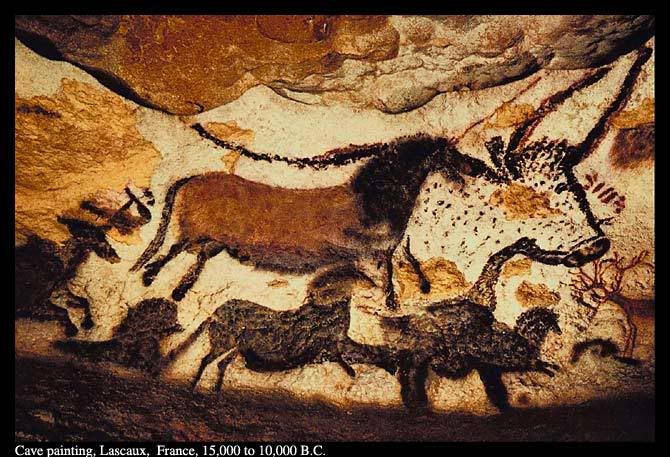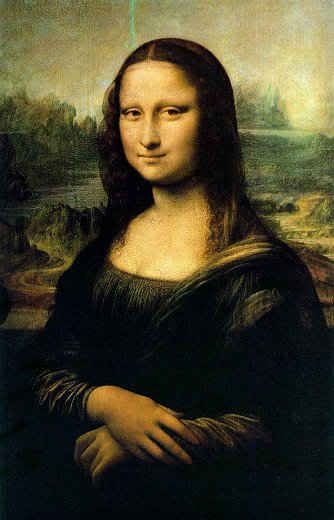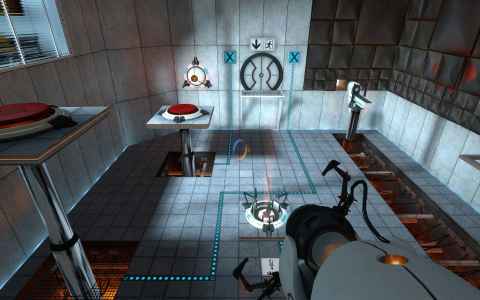Gothic 1, when it was released, gave me a sense of real genuine immersion. I went from feeling useless to feeling really powerful and righteous. It was strange, and the great leveling system had a lot to contribute to this. I think games today are so heavily focused around the technical points; graphics, puzzles and physical interactions, that they've veered from what games should be - a way to tell a story. It is the concept behind art which games boast to be a form of in such a reversed and misconstrued way.
Since cave paintings emerged in our modern culture, we as human beings have driven ourselves aimlessly through their meanings. We've studied the way each brush stroke divides and emphasizes on the cold rock canvas, from simple complexions of animals grazing the open plains, to a fierce hunter wielding a spear in full motion. But what gives us the idea that the two are connected, and that the man on the wall is indeed a hunter wielding a weapon? Regardless, the point is really that it makes us think.
Through the many ages, the curious drawings, deep within the caves, evolved into lucrative depictions of reality, religion, politics and the wonderings within the human mind. From Giotto to De Vinci, Michelangelo to Picasso, art began to emerge as a portal into our memories and imagination but all had one thing in common with the cave paintings before them; they existed to tell a story. In the context of modern technology and how it has influenced video game art, the comparisons of beautiful art, centuries old, with that in today's video games brings me to worry a little, and now I'll explain why.
Understanding that Art, with the Mona Lisa as an example, is an entity which lives in our lives as fruitful in conjuring beauty, wonder and controversy as any human being, we understand that a single image can have a lasting effect on our emotions and truly exist to tell us a story worth dozens of high profile action movies, books, novels and rumors. When we play a video game, we notice less and less of the beauty behind what makes the image in front of our eyes unique from the previous second, possibly because the image is always changing and the events taking place revolve so quickly as to desensitize us enough to pay attention to the task at hand, and to survive or win.
Personally, I love video games, but these underlying factors which we ignore are why I personally believe we feel less, emotionally, when encountering events which would normally trigger such an intense emotional response at the movies, or submerged deep into a good book. Technology has taken a lot of what is beautiful about game art and turned our attention to physics, technical perspectives, and the programming beauty; a real ones and zeros theft of naturalism. Don't get me wrong, games like Portal are really a technological wonder, but at least they've built the game around the understanding of this concept and capitalized on generating emotional responses from the technology alone. Half Life 2 is a good example of possessing the potential to stimulate immersion through visuals but instead retracted by focusing only on the objectives and tasks at hand.
My suggestion to developers is simple. Immersion is what makes or breaks a game. Art is the tool which ultimately tells the story that will last in our minds for a long time. The impact of the delivery should be the money maker. Great graphics are useless unless a player can take time to indulge upon it, and fantasize an existence within it. Nobody wants to look at the Mona Lisa as a page in a Sports Magazine while flipping through the pages. So make the content and the art a unified body - a single experience instead of many divided, because if I have to choose between them, I'm going to select what keeps me alive, and gets me to the next level, as any gamer would.
This has been my well informed Gamespot exclusive opinion. I hope you've enjoyed my perspective and have discovered/changed one of your own.







Log in to comment